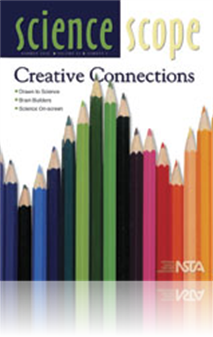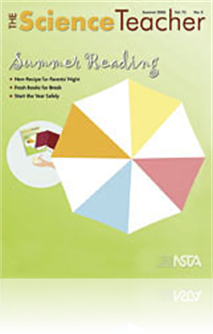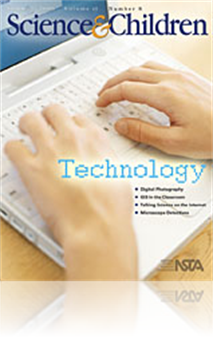All Resources
Journal Article
Overcome Inertia through Summer Reading
Resistance or disinclination to motion is common in middle school teachers over the summer months, especially in those who find themselves at rest in a beach chair. But while your body is at rest, there are plenty of ways to energize your mind--readi...
Journal Article
Eye and Face Protection in School Science
Choosing what eye and face protection to provide for the high school science laboratory is often a challenge. Science teachers and school administrators may not fully understand the relevant safety regulations and standards or be able to correctly id...
Journal Article
Visualizing NeuroscienceL Learning about the Brain through Art
Neuroscience is a subject that can motivate, excite, and stimulate the curiosity of everyone. However, the study of the brain is made difficult by an abundance of new vocabulary words and abstract concepts. The art activities included in this article...
Journal Article
This laboratory exercise introduces students to a fundamental tool in evolutionary biology--phylogenetic inference. Students are required to create a data set via observation and through mining preexisting data sets. These student data sets are the...
Journal Article
Magnifying Students' Interest in Science
Textbooks often teach students that there is one scientific process of science that must be rigidly followed—which leads them to equate science with boredom! However, these negative perceptions can be eliminated by integrating visual art and micros...
Journal Article
Scope on Safety: Dust off your safety procedures
The National Air Pollution Central Administration estimates that over 43 million tons of dust falls on the United States yearly. Now, add to the dust and dirt scenario the exposures in a laboratory environment (such as hazardous chemical vapors, part...
Journal Article
Cooperative Learning in the Science Classroom
To help high school science teachers make sense of the extensive cooperative learning research over the last two decades, this article summarizes the major ideas behind the cooperative learning teaching model, provides educational research evidence t...
Journal Article
Adapting to the Deep Sea: A Fun Activity with Bioluminescence
The deepest parts of the oceans are currently the focus of many new discoveries in both the physical and biological sciences. Middle school students find the deep sea fascinating and especially seem to enjoy its mysterious and "spooky" side. Bring th...
Journal Article
Science Sampler: Light in the media spotlight
Movies, music, cartoons, comics, popular literature, and internet websites are all powerful resources for science teachers. Collectively, these media transform words from a textbook into reference points for understanding a complex world. This articl...
Journal Article
Editor's Roundtable: Creative connections
By integrating creative projects into their instruction, science teachers have the opportunity to awaken "creative expression and knowledge into their students." This month’s Editor’s Roundtable column highlights the articles in this issue of Sci...
Journal Article
Tried and True: How the brain visually perceives the world
The eyes are said to be the "mirror of the soul" or similiar to the "lens of a camera." Have you ever wondered how such a small feature of our anatomy can have such a big impact on our abilities to perceive the world around us? These classic activiti...
Journal Article
Undergraduate Research Communities: A Powerful Approach to Research Training
We applied the concept of learning communities, whereby students develop their ideas in cohort-based settings, to undergraduate research training. This creates powerful research communities where students practice science from observation to experim...
Journal Article
Talking Science, Modeling Scientists
Do you want your students to share their investigation findings in a meaningful way? Or to communicate like real scientists do--beyond conducting investigations in the classroom? Fourth-grade students in the Upstate of South Carolina are doing just...
Journal Article
Commentary: Laboratory Science Teacher Professional Development
In 2004, the U.S. Secretary of Energy announced a new science education initiative to reinvigorate the U.S. Department of Energy's (DOE) involvement in K-12 science education. Part of this new initiative is a revitalized professional development prog...
Journal Article
Editorial: A Change in Terrain or a Shift in Perspective?
Guess what? While you weren't looking, the world got flattened. At least, that's the conclusion of Thomas L. Friedman in his explosive book, The World Is Flat: A Brief History of the Twenty-First Century. Friedman asserts that a recent confluence o...






